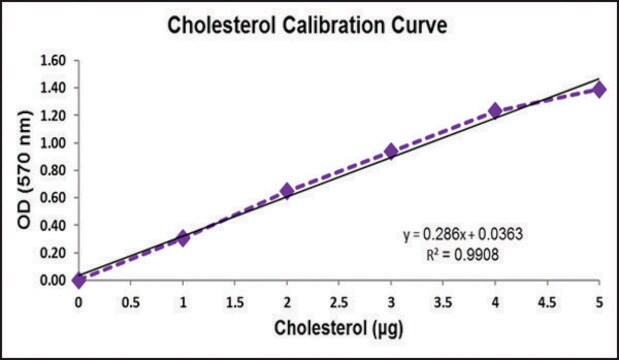MAK052
ALT Activity Assay
sufficient for 100 colorimetric or fluorometric tests
Synonym(s):
Alanine Aminotransferase Activity Assay Kit, SGPT Activity Assay Kit, Serum Glutamic-Pyruvic Transaminase Activity Assay Kit
About This Item
Recommended Products
usage
sufficient for 100 colorimetric or fluorometric tests
detection method
colorimetric
fluorometric
relevant disease(s)
gastrointestinal diseases
shipped in
wet ice
storage temp.
−20°C
Gene Information
human ... GPT(2875)
mouse ... GPT(76282)
rat ... GPT(81670)
General description
Application
Features and Benefits
Suitability
Principle
ALT activity is determined by a coupled enzyme assay, which results in a colorimetric (570 nm)/ fluorometric (λex = 535/λem = 587 nm) product, proportional to the pyruvate generated. One unit of ALT is defined as the amount of enzyme that generates 1.0 μmole of pyruvate per minute at 37 °C.
related product
Signal Word
Danger
Hazard Statements
Precautionary Statements
Hazard Classifications
Aquatic Chronic 3 - Resp. Sens. 1 - Skin Sens. 1
Storage Class Code
10 - Combustible liquids
WGK
WGK 3
Certificates of Analysis (COA)
Search for Certificates of Analysis (COA) by entering the products Lot/Batch Number. Lot and Batch Numbers can be found on a product’s label following the words ‘Lot’ or ‘Batch’.
Already Own This Product?
Find documentation for the products that you have recently purchased in the Document Library.
Customers Also Viewed
Our team of scientists has experience in all areas of research including Life Science, Material Science, Chemical Synthesis, Chromatography, Analytical and many others.
Contact Technical Service


